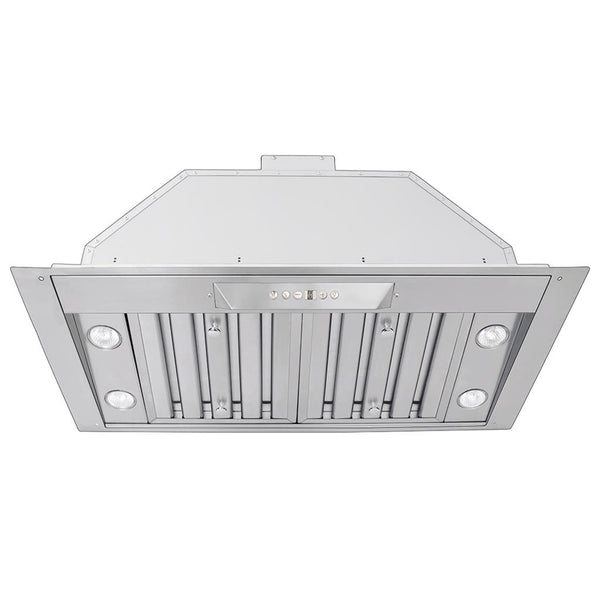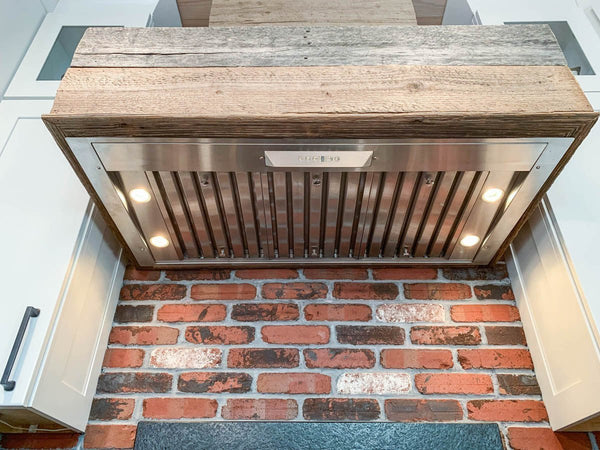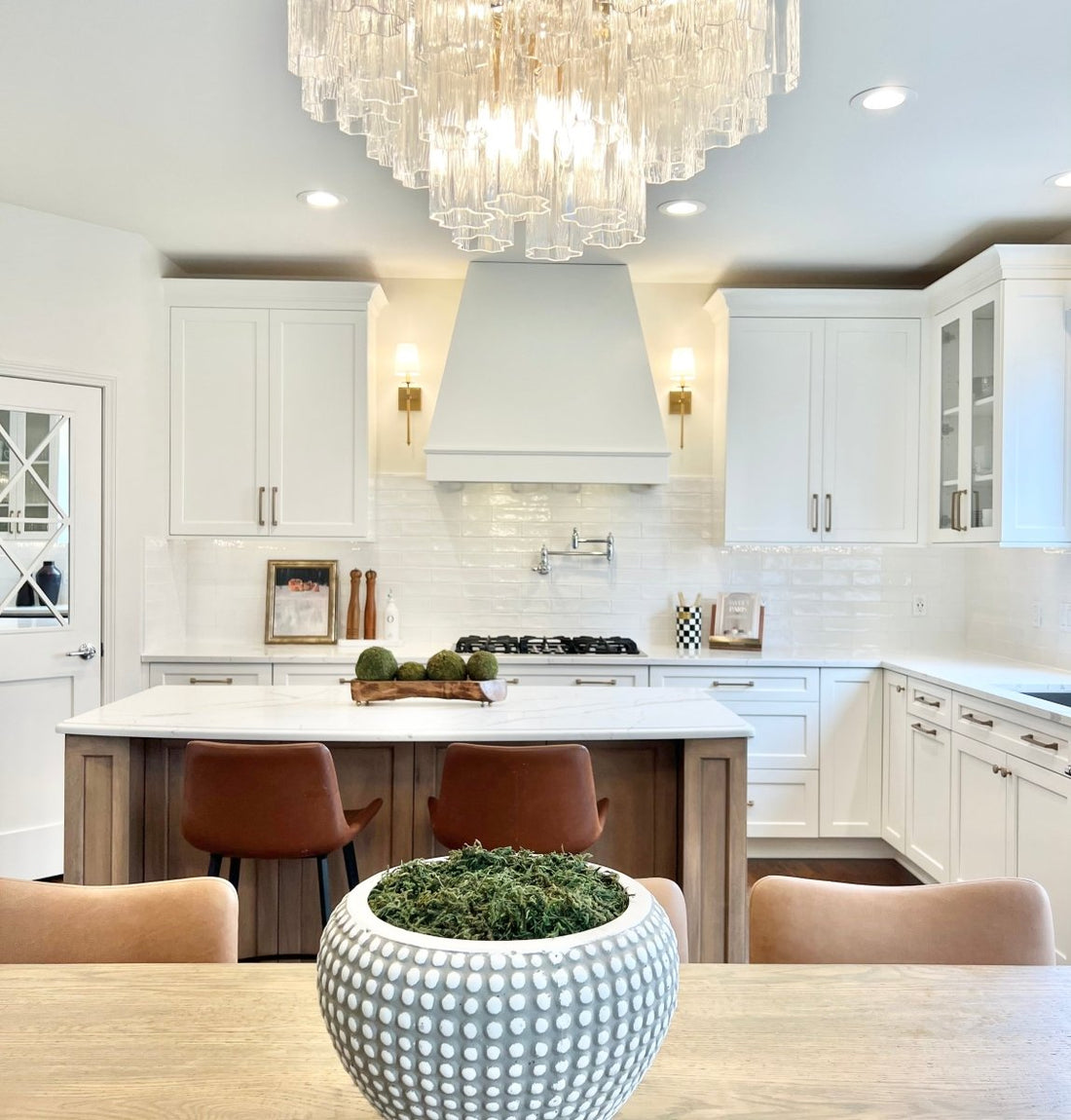After exploring how range hoods affect your home's air system and understanding the importance of makeup air, let's tackle a crucial decision: selecting the right range hood for your kitchen, given its effects on your HVAC. This choice impacts not just your cooking experience but your entire home's comfort and efficiency.
We are breaking this all down for you in 4 articles. This is the third in the series. The next is here.
Overwhelmed by range hood options? Let our experts guide you through the selection process. Our personalized consultations ensure you get the perfect hood for your cooking style and kitchen layout. Give us a call today! 877-901-5530
Understanding CFM: Beyond the Numbers
Cubic Feet per Minute (CFM) is often the first specification buyers consider when choosing a range hood. While important, CFM ratings deserve a deeper understanding than just "bigger is better." Your ideal CFM depends on several factors working together.
Your cooking style plays a significant role in determining necessary CFM. A passionate home chef who frequently stir-fries or grills indoors needs more ventilation power than someone who primarily prepares lighter fare. But here's the crucial part many overlook: your kitchen's size and layout matter just as much as your cooking habits.
Professional kitchen designers often use this simple calculation as a starting point: you need at least 100 CFM for every 10,000 BTUs of your stovetop. This gives you a baseline CFM requirement. However, if you have a high-powered commercial-style range or cook frequently with strong spices, you might want to adjust upward from this baseline.
The Ducted vs. Ductless Decision
Perhaps no choice impacts your range hood's performance more than deciding between ducted and ductless installation. Ducted systems exhaust cooking byproducts directly outside, while ductless options filter and recirculate air within your kitchen.
Ducted systems excel at removing heat, moisture, and cooking odors from your home entirely. They're particularly valuable for serious cooks who generate significant steam or smoke. However, they require careful planning for duct installation and makeup air considerations we discussed in our previous article.
Ductless systems, while more flexible in installation, come with different considerations. Modern filtration technology has improved dramatically, but these systems still can't match the effectiveness of ducted ventilation for heavy-duty cooking. They're best suited for light cooking situations or where ducted installation isn't feasible.
We have been manufacturing and selling range hoods since 2007. We sell wall-mount, island, under-cabinet, range hood inserts, and outdoor-rated hoods.
Essential Features Worth Considering
Modern range hoods offer sophisticated features that enhance both functionality and convenience. Here's a focused look at the most impactful ones:
|
Feature |
Benefit |
|
|
Variable Speed Control |
Matches ventilation to cooking intensity |
|
|
Delayed Shut-off |
Continues ventilation after cooking |
|
|
Heat Sensors |
Automatically adjusts to cooking conditions |
|
|
LED Lighting |
Bright, efficient task lighting |
|
|
Sound Dampening |
Quieter operation at high speeds |
|
Planning Your Kitchen Ventilation System
A successful range hood installation requires careful coordination with your kitchen's overall design and ventilation plan. Consider your hood's relationship with:
Your cooking surface: The hood should extend slightly beyond your cooktop's edges for optimal capture. For island installations, this overhang becomes even more crucial due to cross-drafts.
Ceiling height: Your hood's mounting height affects its performance significantly. Too high, and it loses effectiveness; too low, and it interferes with cooking visibility and comfort.
Room layout: Air currents from windows, doors, or HVAC vents can impact your hood's performance. Understanding these patterns helps determine optimal placement and required CFM.
Ready to explore range hood options that perfectly match your kitchen and cooking style? We offer the largest selection of professional-grade hoods with expert guidance every step of the way. Contact us now to transform your kitchen ventilation. 877-901-5530
Working with Professionals
Selecting and installing a range hood isn't a solo journey. Professional HVAC contractors bring crucial expertise to the process. They understand local building codes, ventilation requirements, and the interaction between your range hood and other home systems.
A qualified professional can:
- Evaluate your kitchen's specific ventilation needs
- Calculate proper makeup air requirements
- Design efficient duct runs that maximize performance
- Ensure proper electrical and venting connections
- Coordinate with other trades for optimal installation
Making Your Final Decision
Your range hood choice ultimately comes down to balancing several factors: cooking habits, kitchen layout, home design, and budget. Don't be swayed solely by aesthetics or CFM ratings. Consider the complete picture, including performance requirements based on your actual cooking patterns, installation constraints and opportunities in your space, long-term maintenance needs, and accessibility impact on your home's overall ventilation system and noise levels during typical use.
Remember, the best range hood is one that effectively removes cooking byproducts while working harmoniously with your home's other systems. Take time to research, consult professionals, and consider all factors before making your decision.
In our next article, we'll explore how to maintain your range hood system for optimal performance and longevity, ensuring your investment continues to serve you well for years to come.












